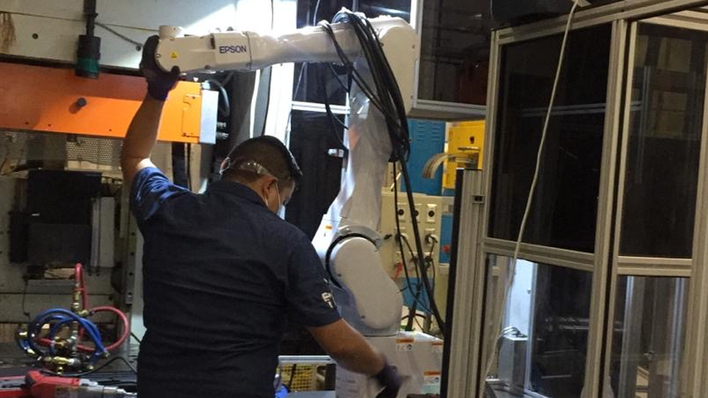You’ve likely read the research studies saying remote workers are more productive. According to FlexJobs, working from home is less stressful 87% of the time. But since you’ve started to work from home, you’ve struggled with focus and productivity. Perhaps you’ve also felt a bit disconnected — and even lonely — in your home office.
You aren’t alone. While people often share the benefits of working remotely, many often find the transition to be challenging, especially moving from 100% in the office to full-time at home. However, co-workers may be less likely to talk about their issues, making you feel that you are the only one dealing with an adjustment period.
While a Stanford study found remote workers are 14% more productive, the gains aren’t instant or even guaranteed. You only get more done at home when you create a routine and work environment that works for your personality and work style. But unlike working in an office, you have a lot more flexibility to create the best place, time and process for working.
Here are 7 tips for making work from home, work for you (pun intended):
Establish a routine
In most office environments, the routine is already set and you just have to adapt to the office schedule and culture. But one of the best parts, as well as the most challenging parts for many, is that working from home often gives you much more flexibility. By using that flexibility to create a schedule that works best of you, you can be more productive — and you can use your commute time for extra fun time instead of catching up on work.
Start by figuring out when you need to be available in real time, for regular meetings, and what kind of deadlines you’ll have to meet with your work. You may not be a morning person, and you get your best work done in the early evening, but you like to take a run every day. A good schedule for you might be starting work at 9:30 am and taking off for lunch from 12:30 to 2 pm to work out. After lunch and a shower, you then work from 2 pm to 7 pm. Because many work-from-home employees find that they work longer hours than they do working in an office, try to stop work at your set time whenever possible.
You may need to experiment with different schedules until you find one that works best for your productivity, family and work responsibility. While most at-home workers find they are most productive wearing “real” clothes, comfortable athletic wear is a common compromise — many people use the trick wearing a nice shirt for video calls with sweat pant bottoms.
And while you should stick to the schedule you set, make sure it still works for you — and remember that you can change it (as long as your boss is fine with it) as your life and work needs change.
Create a quiet and comfortable place to work
Your kitchen table or couch probably won’t work as a makeshift office for more than a couple days. Very quickly, your back will protest or your productivity will drop — very likely, both will happen. For most people, a dedicated (and separate) workspace — preferably with a door that shuts (bonus if it locks) — is the key for working from home successfully.
However, if you don’t have an official home office in your house, don’t despair. Any quiet and often unused space in your house will work, such as a guest room, bonus room or even a formal dining room. And when it comes to the ever-necessary video conferences, try to create a professional backdrop (bookcases are always a great choice) for video calls. If that’s just not possible, check out the many backdrops you can select for your calls.
While you can be creative with your space, your desk and chair should be a priority. Check with your company to see if they offer reimbursement for setting up your home office. If not, invest in a quality chair — this is not the place to scrimp and save.
Keep in touch with friends and colleagues
The best part of working from home for many people is that there are no distracting co-workers. The worst part is not having co-workers to keep you company. You must actively (and sometimes creatively) find a way to replace those interactions so you can stay connected to the office grapevine. Find a way to stay in touch, such as creating an office Slack channel, where off-topic conversations are encouraged — to replace the hallway and breakroom conversations. Many remote workers set up Zoom happy hours and lunches to keep their personal connections with colleagues strong.
Get some sunlight
When working at the office, you likely saw the sunshine on your commute, when you went out to lunch and (hopefully) when you left at the end of the day. But working from home takes away many of these natural opportunities and you must seek out natural light. A Northwestern University study found that workers who sat near a window got an average of 46 more minutes of sleep at night, which positively helps productivity and overall health.
Ideally, your new home office space has a nice, big window. If not, working from home provides you with many creative ways to get your sunlight. On sunny days, take your coffee breaks on your front steps or back deck. And when it’s nice out, eat your lunch on your porch. Even better, take short walk (or a long one, if you want to) to start your day off in the morning or after you eat your lunch.
Make a plan for entertaining the kids
Working at home while also being the sole caregiver all day, every day, for small (or even medium-size) kids is a recipe for disaster — or at least frustration. But if that’s your current situation, you can create a game plan for making it doable.
Try working as much as possible when they are sleeping, such as early morning, naptime and nighttime, to get the majority of your work that requires deep focus crossed off your to-do list. For those times when you must work when they are awake, create a “work kit” with special toys and craft items for your kids to use only when you are working. And when you must be on a conference call, don’t feel guilty about letting them use their tablets or watch a movie.
Focus on top priority work
Working at home means your productivity is your sole measure of performance; actual “attendance” doesn’t typically mean a whole lot (other than when you have to be readily available for your boss, clients, or co-workers). Your boss is likely to look at what you get done each day and week much closer than when they saw you physically sitting at your desk every day. That means not only that you need to be tracking your own productivity closer — you need to make sure that it will pass muster.
While focus can be a challenge regardless of where you’re working, many people have trouble learning to focus while working at home. Harvard Business Review recommends starting with your most important work so that you both make sure it gets completed and give these tasks your best effort. Because remote employees are concerned about the appearance of productivity, they often start with immediate tasks instead of important tasks.
Maintain regular meal and snack times
Your office fridge likely only held your co-workers’ (possibly rotten) leftovers. But your home fridge probably contains a much wider variety of goodies. Many people who are new to working at home give in to the temptation to graze throughout the day and — even worse – snack on unhealthy treats.
Start on the right foot by planning ahead for healthy lunches, which makes it easier to resist the leftover pizza or drive thru calling your name. Set a time for lunches and healthy snacks to keep you from giving in to the temptation to wander into the kitchen when you are stressed from work.
Yes, working from home is a bigger transition than many people expect. But it’s very possible to create a routine and space that make you look forward to heading to your home office spot every day. No commute required.
![]()



